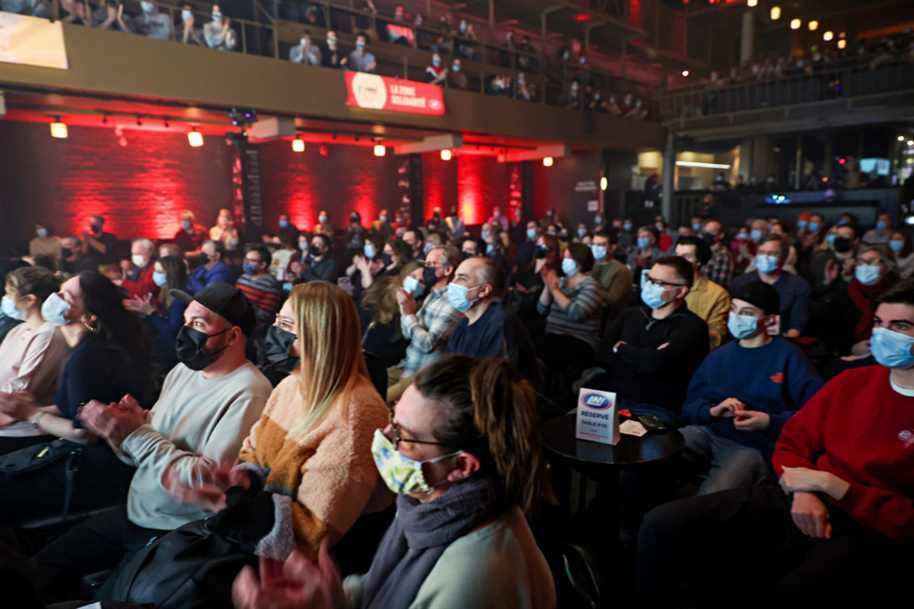In April 2021, the word languor (languishing in English), reintroduced into the public space by the American psychologist Adam Grant, was welcomed by some as a revelation. A few pandemic waves later, that feeling of weariness has not gone away. What if the time had come to activate?
Posted yesterday at 6:00 a.m.
The gyms have reopened. Performance halls, cinemas, restaurants and spas too. And guests can now walk through your doorstep. Party ? Oh no. If languor has penetrated your heart like in a poem by Verlaine, it will probably not disappear immediately with the lifting of sanitary measures.
If there is one thing that is currently observable in this languor, it is demotivation, loss of interest and deconditioning. And that won’t go away the day we relax. The brain doesn’t work like that.
The DD Christine Grou, psychologist and president of the Order of Psychologists of Quebec
Last spring, she was called upon to comment in several media on a text by psychologist Adam Grant, published in the New York Times, who called this state of mind, which is neither exhaustion nor depression, “but a feeling of stagnation and emptiness”. “It’s not better than a year ago, if it is, it’s even worse”, notes the DD Group. “Not only is the languor still present, but it affects more people, people who remained relatively preserved, and there are some for whom it has increased. For others, it’s more than languor. And in these cases, it is better to consult a health professional.
A cure
Naming that emotion and understanding that it’s shared by the community probably helped a lot, but a year later we’re also tired of pining, noted the coach executive and author Brad Stulberg, in an opinion piece published on February 13, also in the New York Times. After having rested, having made bread and having offered a manicure, it is necessary to activate, pleads it. How? ‘Or’ What ? Behavioral activation therapy, used by psychologists to treat patients with depression and mood disorders, may offer solutions for those who are languishing.
Developed in the 1970s, behavioral activation is a component of cognitive-behavioral psychotherapy. Here, we are not aiming to change the individual’s way of thinking, but his behavior by taking him out of inaction. “It’s not fair to say: ‘get active’, it’s also a reflection on what is pleasant for me, what makes sense and what is important”, specifies Dominic Pesant, professional psychologist in support clinic at the CIUSSS du Nord-de-l’Île-de-Montréal and trainer in behavioral activation. On March 12, 2020, he was released from his usual duties in order to help the staff members of his CIUSSS through the emerging pandemic. The behavioral activation guide he created has since been updated five times and has been passed on by stakeholders and organizations across the province.
“It is intended to help people bounce back from this feeling that we can call pandemic fatigue or languor”, he specifies, adding that it is better to activate between the waves rather than to waiting for the end of the pandemic to enjoy life.
He insists on the reflection aspect of the approach and rejects the prescriptions, citing the example of the doctor who would recommend to his patient to go for a walk three times a week. “Maybe the person hates it, walking! »
“The important thing is to do something that generates positive feelings, that gives us pleasure and a feeling of competence, precisely to break down negative ideas,” adds Christine Grou.
The principle in action
A self-employed telecommuter, Chantale Gagnon put this principle into practice last fall. His activity is walking. But she chose it. The one who previously qualified as “active, but not regular” has given herself the challenge of going for a walk every day on Mont Saint-Hilaire, rain or shine.
“I wanted to be better, I wanted to be good,” she says. I was calling people and it was never a good time to walk. It pissed me off. I said to myself: that’s enough, I’m going. Maybe I’ll meet people and if I don’t meet any, I do it for myself. “She first held 21 days, the challenge she had launched, then continued.
It was no longer my head that coordinated all that, it was my body. It happened all by itself. I haven’t had a drop in morale or fatigue since. I’m more in a good mood. It’s a circle that is positive because the more you do it, the more you want to do.
Chantale Gagnon, self-employed telecommuter
Dominic Pesant talks about the “outside in” principle: “I do something and I regain motivation and energy rather than waiting to be motivated to do things. »
We can start little by little and be indulgent towards ourselves, advises Christine Grou, since we have two years of deconditioning to unravel. Advice that also applies to those who will soon return to the office. “The first few days, maybe wonder less, go quietly, but avoid avoidance, she recommends. Because if we avoid it all the time and postpone it, we won’t do ourselves any good. On the contrary, we will increase our negative feelings about it. »
And the longer we wait to restart, the more difficult it will be to activate. “Avoidance is an adaptive process when you are anxious, but it becomes an enemy when it makes return anxiety persist,” she concludes. So, where is this suit we wore on March 12, 2020?

